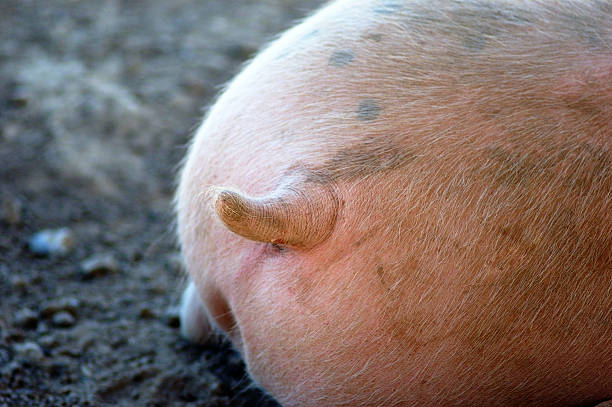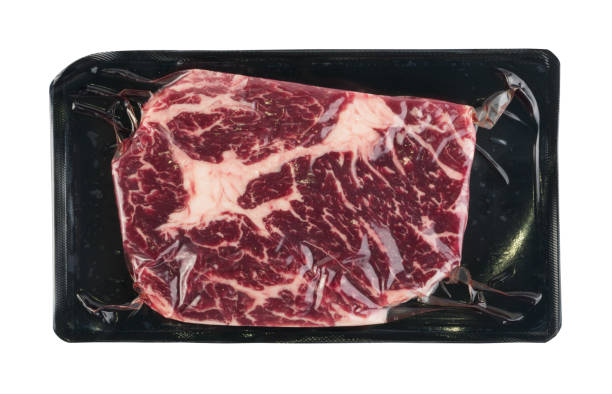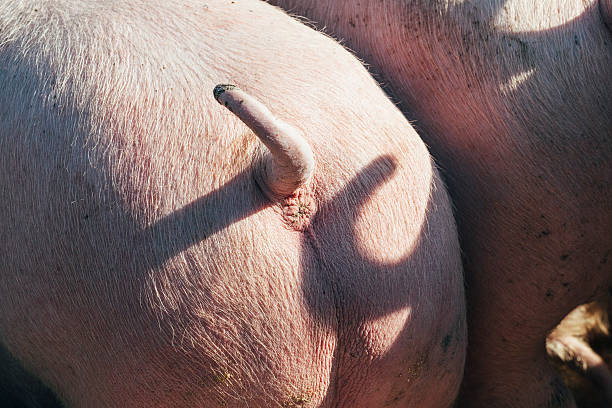Cooking pork butt is an art form and requires a great deal of skill and patience to get just right. The thought of preparing this cut of meat can be intimidating, but with the proper temperatures you can ensure that the end result will be delicious. Before taking on the task at hand, you must understand what temp to wrap pork butt in order to achieve juicy, mouth-watering results every time. In this blog post we’ll look closely at why it’s important for your safety as well as flavor considerations when deciding on what temp to wrap pork butt.
What is a pork butt?
Pork butt is a cut of meat from the upper part of the foreleg and shoulder. It’s known for its bold flavor, making it ideal for slow-cooked dishes like chili verde and pulled pork sandwiches. Pork butt is an economical cut of meat that can be prepared in many different ways, such as grilling, roasting, braising, or smoking. When cooked correctly, pork butt is juicy and tender. It’s a great way to feed a crowd without breaking the bank.

Importance of temperature when wrapping pork butt
When wrapping pork butt, it is important to consider the temperature of the oven. Wrapping too early can cause the pork to overcook and become dry. The ideal temperature for wrapping pork butt in foil is 250°F (121°C). At this temperature, the pork will cook slowly and evenly to create a tender, juicy end product. Wrapping at a lower temperature can cause uneven cooking and an overcooked, dry product.

Benefit of wrapping a pork butt while cooking
Wrapping a pork butt in aluminum foil while cooking can provide many benefits. The foil traps moisture and steam, which helps the meat to remain juicy and tender. Additionally, wrapping prevents the pork from drying out due to direct heat, resulting in an evenly cooked product. Wrapping also allows the pork butt to cook at a more consistent rate for optimal flavor and texture.
How to choose a good pork butt to wrap?
When selecting a pork butt to wrap, look for one that is evenly marbled with fat. This ensures that the meat will be moist and flavorful when cooked. Additionally, you should choose one that is firm and has a nice shape – this indicates that it was cut from healthy pig. Pay attention to any discoloration or sliminess on the surface of the pork butt, as this can indicate that the meat is spoiled. If you have any doubts, it’s best to purchase fresh pork from a trusted retailer.
When to wrap pork butt?
As a general rule, it’s best to wrap pork butt in aluminum foil when the internal temperature reaches around 195°F (91°C). This will ensure that the meat is cooked through but still juicy. Be sure to check the internal temperature of the meat before wrapping and adjust time and temperature as necessary.
What temperature to wrap pork butt?
So what temp to wrap pork butt? When wrapping pork butt, the ideal temperature is 250°F (121°C). This will ensure that the meat cooks slowly and evenly to create a juicy and tender end product. Wrapping at a lower temperature can cause uneven cooking and an overcooked, dry product.
Factors affecting the decision to wrap pork butt
There are several factors that come into play when deciding whether or not to wrap pork butt in foil. Consider the cooking time, temperature, and desired end product before making a decision. Wrapping can help keep the meat moist and tender but too much wrapping can cause it to become dry and tough.
How to check the internal temperature for pork butt?
The best way to check the internal temperature of pork butt is with an instant read thermometer. Insert the thermometer into the thickest part of the meat and wait for it to register a temperature. The ideal internal temperature for pork butt is 145°F (63°C). If your thermometer reads higher than that, remove the pork butt from heat and let it rest until the internal temperature reaches that mark. Doing so will ensure that your pork butt is cooked to perfection every time.
Step guide to wrapping pork butts at the recommended temperature
1. Preheat oven to 250°F (121°C).
2. Place pork butt on a baking sheet and season with desired spices or rubs.
3. Roast the pork butt until it reaches an internal temperature of 195°F (91°C).
4. Remove from oven and let rest for 10 minutes.
5. Wrap pork butt in aluminum foil and place back in the oven for another 1-2 hours, or until the internal temperature reaches 205°F (96°C).
6. Remove from oven and let rest before serving.
Wrapping pork butt is an essential step to creating a juicy and tender end product. By following the steps outlined above, your pork butt will be cooked to perfection every time. Be sure to check the internal temperature of the meat before wrapping and adjust time and temperature as necessary.
Pros and cons of each temperature wrapping pork butt
Wrapping pork butt at a lower temperature can cause the meat to overcook and become dry. On the other hand, wrapping at a higher temperature can cause uneven cooking, resulting in an inconsistent texture. To ensure optimal results, it is important to wrap pork butt at 250°F (121°C).
Tips for wrapping pork butt
– Make sure to preheat the oven to 250°F (121°C).
– Roast the pork butt until it reaches an internal temperature of 195°F (91°C), then wrap in aluminum foil.
– Place back in the oven for 1-2 hours, or until the internal temperature reaches 205°F (96°C).
– Let rest before serving for the juiciest and most tender end product.
– When wrapping, make sure to use multiple layers of aluminum foil for maximum heat retention.
– Be careful not to wrap the pork butt too tightly; this can cause uneven cooking.
– If desired, add spices or rubs before wrapping for extra flavor.

Conclusion: What temp to wrap pork butt
In conlusion what temp to wrap pork butt, Wrapping pork butt is an essential step to creating a juicy and tender end product. Be sure to preheat the oven to 250°F (121°C), roast until it reaches an internal temperature of 195°F (91°C), then wrap in aluminum foil and place back in the oven for 1-2 hours, or until the internal temperature reaches 205°F (96°C). Make sure to use multiple layers of aluminum foil and not to wrap the pork butt too tightly. If desired, add spices or rubs before wrapping for extra flavor. By following these steps, your pork butt will be cooked to perfection every time.
FAQ: Wrap pork butt
When to aluminum wrap your pork butt?
For optimal results, wrap pork butt once it reaches an internal temperature of 165°F. This temperature can be achieved within a few hours when smoking the pork at 225-250°F. If a higher smoking temperature above 250°F is used, the desired temperature will be reached even faster.
Best way to wrap a pork butt when smoking?
Securely wrap the pork butt in foil, ensuring the entire piece of meat is covered. Fold the sides inward and repeat the process to create a tight seal. Eliminate any excess foil by tucking it in. Tighten the wrap to guarantee no air pockets remain, allowing the meat’s outline to be distinct.
What happens if i wrap my pork butt too early or too late?
Knowing when to wrap pork butt is crucial for achieving a flavorful and perfectly cooked result. Wrapping the meat too early can compromise its taste and lead to a soft exterior. On the other hand, waiting too long can result in overcooked pork.
Is it ok to wrap pork butt at 300 degrees?
No, wrapping pork butt at temperatures exceeding 250°F will cause it to cook too quickly and become dry. The ideal temperature for wrapping pork butt is 250°F (121°C). This ensures that the meat retains moisture and flavor while cooking. Wrapping at a lower temperature can cause uneven cooking and an overcooked, dry product.
What are the benefits of wrapping a pork butt?
By wrapping a pork butt in aluminum foil, chefs can ensure that their meat is both moist and tender during the cooking process. This technique also helps to slow-cook the cut of meat for an even cook, ultimately resulting in a succulent and flavorful meal.
What are some of the best methods for wrapping a pork butt?
For succulent and flavorful pork butt, preheat the oven to 250°F (121°C) for a slow roasting. Once it reaches 195°F (91°C), rest for 10 minutes before wrapping it in aluminum foil with multiple layers that are not too tightly secured. To add extra flavor, apply a rub or spices of your choice prior to wrapping. Then place back into the oven until its internal temperature registers at 205 ° F(96 ° C).
What are some of the best materials to use for wrapping a pork butt?
To achieve a delicious, juicy pork butt that melts in your mouth, aluminum foil is the perfect wrapping material to ensure maximum heat retention. Simply layer it on for optimal flavor – simple as that! If you’re looking for an even crispier texture with thorough cooking throughout then parchment paper and butcher paper are great alternatives. Get creative and experiment – whatever method suits your palate best will become clear soon enough.
What are some of the best tips for wrapping a pork butt?
For best results when cooking a pork butt, preheat your oven to 250°F (121°C) and roast until the internal temperature reaches 195°F (91°C), then wrap in several layers of aluminum foil. Be sure not to over-wrap as this will inhibit even heat circulation while baking. Add spices or rubs for additional flavor if desired before wrapping and putting back into the oven for 1-2 hours – you’ll know it’s ready when its inner temp is at 205 °F(96 ° C). Give the masterpiece 10 minutes rest time upon completion so that all those delicious juices have time to settle before serving up juicy tenderness.
What are some of the best ways to keep a wrapped pork butt warm?
To ensure your pork butt is served at its best, consider using one of these heat-retaining methods. Place it in an oven-safe container and cover with aluminum foil for instant warmth; alternatively, line a baking sheet with parchment paper or butcher paper to help keep the temperature constant over time. For immediate serving needs, wrap the pork butt in a clean kitchen towel before bringing it out – odds are you won’t be disappointed.
What are some of the best ways to store a wrapped pork butt?
To ensure delicious and safe storage of your wrapped pork butt, multiple layers of aluminum foil is recommended. If you’re looking for an extra layer of protection against temperature fluctuations outside the optimal 40°F (4°C) mark, consider using parchment or butcher paper on top – making sure to keep it in a tightly sealed container.
What are some of the best ways to reheat a wrapped pork butt?
Reheating a wrapped pork butt doesn’t have to be difficult – simply preheat your oven and bake until it reaches the internal temperature of 165°F (74°C). For longer periods, you can wrap it in parchment or butcher paper then set your slow cooker to low or warm. If serving soon after wrapping, keep the meat’s warmth by covering with a clean kitchen towel.
What are some of the best ways to cook a wrapped pork butt?
For succulent and flavorsome pork butt, preheat your oven to 250°F (121°C). Roast the meat until it reaches an internal temperature of 195°F (91°C), then wrap in multiple layers of aluminum foil. Place back into the oven for 1-2 hours or till desired interior temp is reached – 205˚F(96˚ C) will yield delectably juicy results! To kick up the flavor profile further, rub with spices before wrapping. After roasting let a few minutes rest prior to serving for maximum tenderness and taste sensations.
What are some of the best ways to serve a wrapped pork butt?
Enjoy juicy, tender pork slices when you serve a wrapped pork butt – just make sure to let it rest first! This ensures that the natural juices are evenly distributed throughout and adds another layer of flavor. For something different, try slicing or shredding before serving with your favorite sides for an enjoyable meal experience.
What are some of the best recipes for wrapped pork butt?
Treat your taste buds to a culinary experience with three of the most flavorful wrapped pork butt recipes. Start by making up an aromatic and delicious dry rub or marinade, then seal in all that flavor goodness by wrapping it tightly in aluminum foil as you cook! Choose Barbecue Pulled Pork for BBQ perfection; Fajitas Asado Tinga Estilo Jalisco for Mexican-inspired flavors; or Carnitas al Carbon if you’re craving something smoky.
